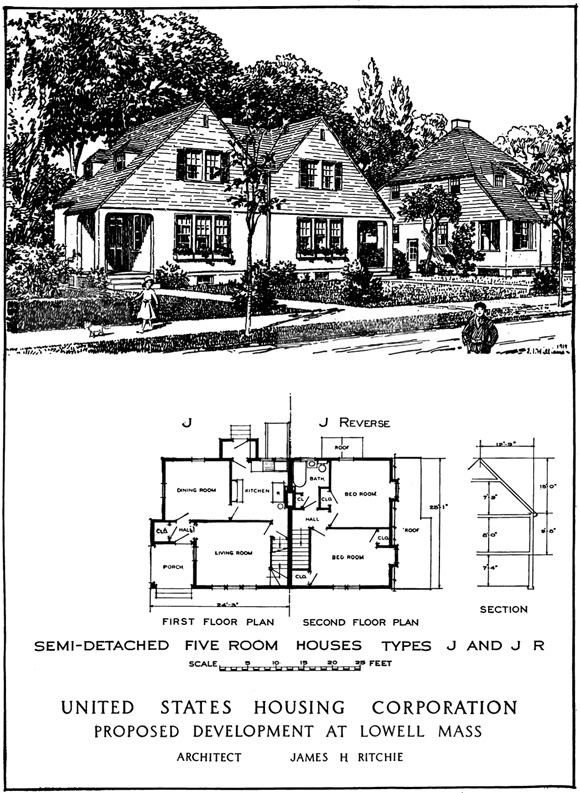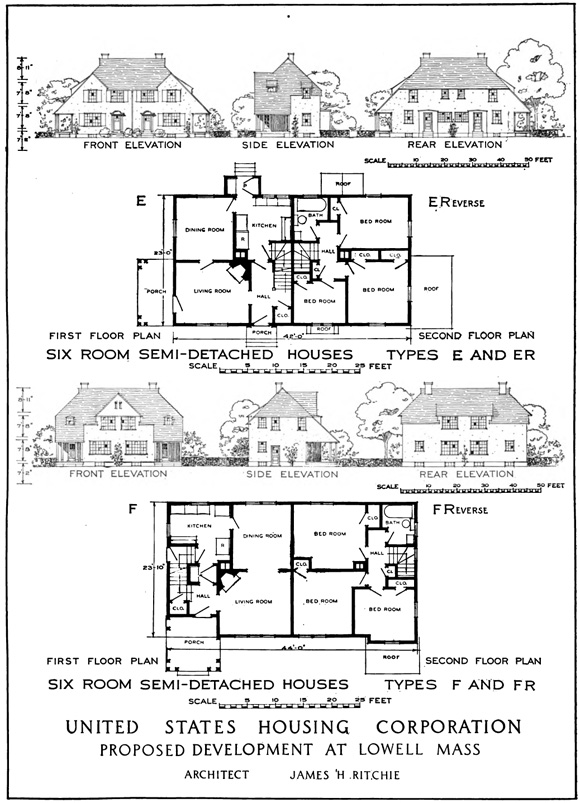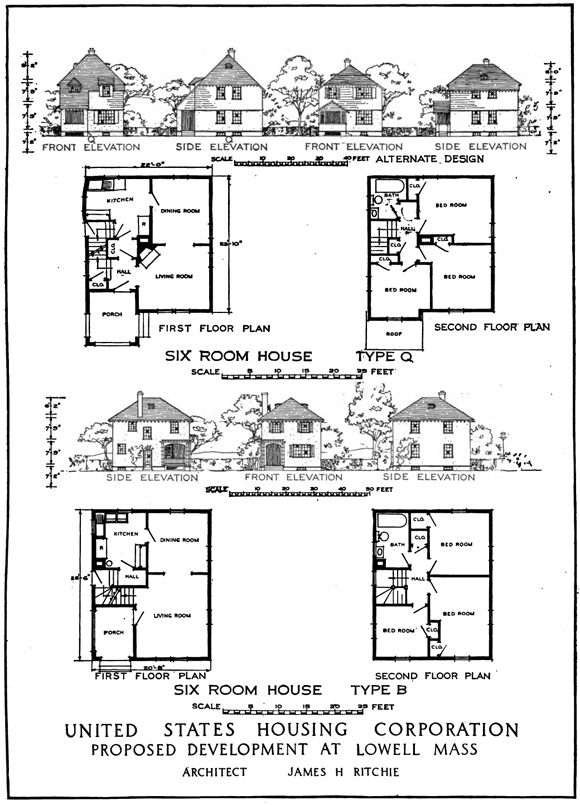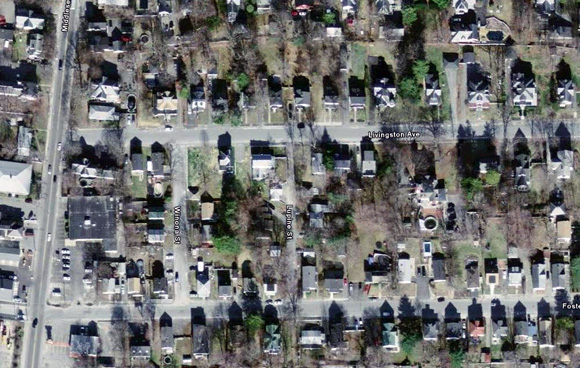Lowell, MA
General Description (1919 report):
"Lowell, Mass, one of New England's oldest industrial communities, had among its many manufacturing plans several that were engaged in producing munitions or their accessories. These war industries had absorbed a large number of employees from local nonessential industries and had brought in many additional workers, of whom a large percentage were unmarried women. The sudden increase of War Department orders to these concerns with the ensuing labor increase entailed a serious housing problem, for the city's other varied interests were already experiencing housing difficulties. Investigation showed that the city was not badly underbuilt and could readily furnish lodging for a considerable percentage of the unmarried workers. There are many large cotton mills here and a large foreign population, which includes Greeks and Armenians in great numbers. The grades of workers to be served by the United States Housing Corporation projects included skilled and semiskilled mechanics. The problem resolved itself into building a comparatively small number of houses with a few stores, building dormitories with cafeterias for unmarried workers, and providing additional cafeteria service for workers lodged in private houses."
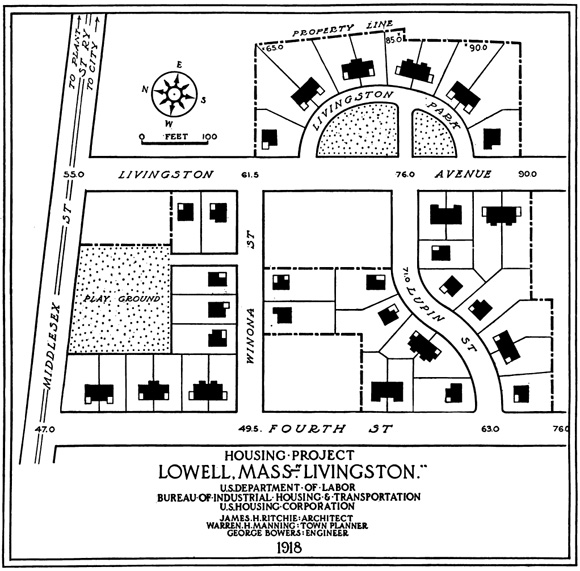
1919 excerpt describing the design of the sites:
Boston & Maine Railroad Site - Area planned: 3.57 acres. Housing planned: 170 single men in dormitories.
High School Site - Area planned: 2.23 acres. Housing planned: 202 single women in dormitories.
High School Extension Site - Area planned: 9.18 acres. Housing planned: detached houses, 19 families; semidetached houses, 60 families; apartments, 4 families; total, 83 families.
Livingston Site- Area planned: 6.01 acres. Housing planned: detached houses, 16 families; semidetached houses, 24 families; total, 40 families.
"The problem of sites was complicated by the fact that the industries concerned were located in two or three districts; no one of them was far from the center of the city, but the built-up area made it difficult to find sufficient land near them.
"The dormitories were planned for two sites, on of three buildings for men and one of four for women, each site with a cafeteria. The women's group was provided with a clubhouse with cafe service. Houses were planned of four, five, and six rooms, single and semidetached sypes, situated on two widely separated tracts..."
"The [Livingston] tract is nearly a mile from the store center, but schools are within half a mile...The character of construction required was permanent wooden detached and semidetached houses. The surrounding development is residential of medium class, with some even better. For developments of the size of the High Street and Livingston sites, the types are too numerous and varied in treatment, and the roofs too complicated for pleasing grouping. These faults are intensified by the size of the lots, which were rather smaller than in other developments of similar character. Plans, however, are generally very good."
The Lowell Livingston Site Today
Renderings, 1919
